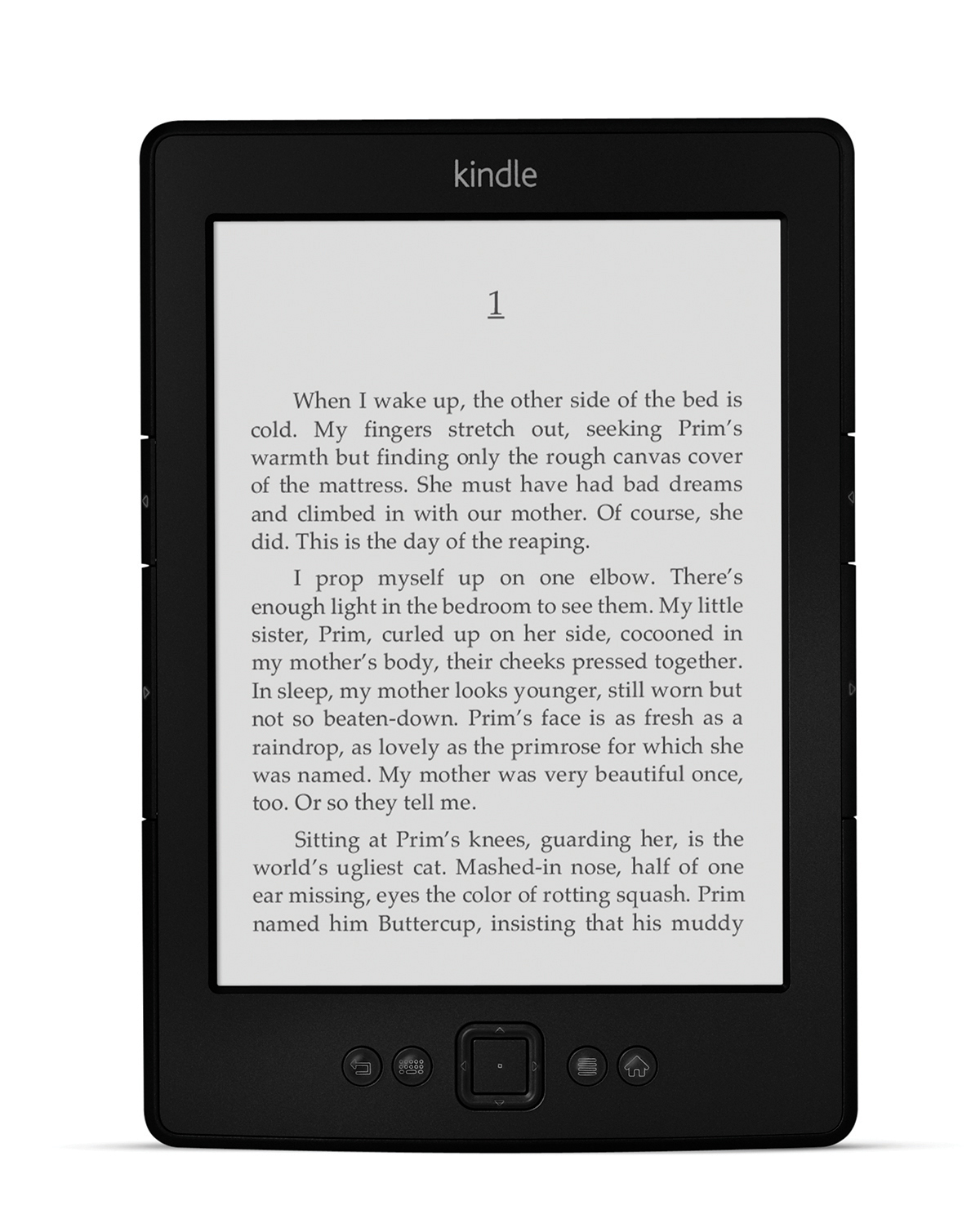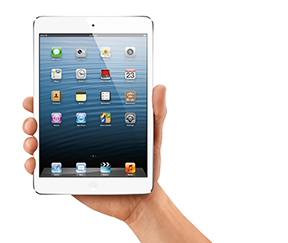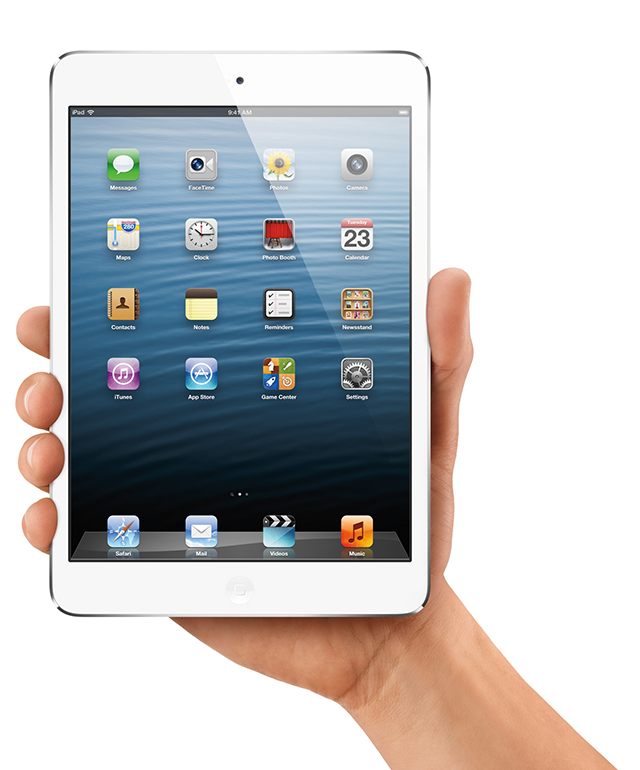Love them now, or love them later (published May 2013)
The value of digital publications for an offshore sailboat is pretty obvious. We can store a boat-sinking load of books on a small thumb drive, available now with 128 GB storage for under $100––though it would be better to store them on something much bigger and user friendly so we don’t lose it. A typical book weighs over a pound and forty copies takes up a cubic foot. We can get this book with a few illustrations into 0.5 MB as an ebook, meaning that same thumb drive could hold 256,000 copies, which in round numbers corresponds to the size and weight of a house.
It is prudent to have on board print copies of crucial navigation publications, but there is no reason not to have a complete mariner’s library of everything else you might need or care to read when underway in the form of ebooks. An obvious category would be every manual for every piece of equipment on your boat, each fully searchable, with custom bookmarks and highlights, and even Internet and Skype or Viber phone links in them. Looking ahead, you could tap a link in one and have your sat phone call them. Add to that every Cruising Guide and Sailing Directions and related literature for where you are going, plus all of your work-related and pleasure reading texts.
But with all technology comes a learning curve. If everything we wanted were in free portable document format (PDF) files, that might be fine, and indeed many important texts for sailors are free PDFs, but many are not, and in fact, PDF is not always the best format. In the world of digital reading, PDF is probably on the way out. It does not have very good compression, and many PDFs are not efficiently made. The typical book as a PDF could be anywhere from five to five hundred times the size quoted above, and reading experience can vary dramatically. PDFs remain the dominant format for printing, with no change in sight, but that is not the topic at hand.
The most popular ebook formats are Kindle, epub, PDF and iBooks. Each has pros and cons, not the least of which is whether or not there is one for the book you want.
KINDLE
 We start with the easiest to buy and read, which accounts for why Amazon Kindle has more than 60% of the commercial ebook market. They have made an outstanding product, with excellent distribution and support for both customers and publishers, not to mention that they mercilessly destroyed any budding competition with low prices. Indeed, when six top ebook publishers including Apple got together to defend themselves, the Department of Justice sued them for a price fixing conspiracy and won. Kindle was unscathed and came out farther ahead. This is not to say it will stay this way. The technology and potential market are too important for one company to dominate for long. Google has made an effort at this for years, but has not got it together despite their resources.
We start with the easiest to buy and read, which accounts for why Amazon Kindle has more than 60% of the commercial ebook market. They have made an outstanding product, with excellent distribution and support for both customers and publishers, not to mention that they mercilessly destroyed any budding competition with low prices. Indeed, when six top ebook publishers including Apple got together to defend themselves, the Department of Justice sued them for a price fixing conspiracy and won. Kindle was unscathed and came out farther ahead. This is not to say it will stay this way. The technology and potential market are too important for one company to dominate for long. Google has made an effort at this for years, but has not got it together despite their resources.
Kindle ebooks can be read on dedicated Kindle devices, now essentially mini-tablets with many wireless functions beyond book reading, including a Kindle App Store, or they can be read on free Kindle apps that run on any computer, Mac or PC, or any portable Apple (iOS) or Android device, phones and tablets.
Kindle books can only be purchased at Amazon. All records of your book purchases are stored which means you can move them from one device to another or view them on all of your devices. When you stop reading the book from your computer, and then open, say, the Kindle iPad app, the book will be open right where you left off, with all bookmarks, notes, and highlights updated. All of these records are saved automatically. On a bus ride, you can carry on reading from your phone.
Then if you wish, you can loan the book to friends to read (loaning things is popular with cruising sailors). Amazon has excellent online help to learn the features and options. They also have a gift program where you can buy a book for a friend and have the info sent by email to them, and if they do not want that one, they can convert your purchase price into a gift card for another book.
Kindle apps will read Kindle file types (mobi, prc, azw, kf8) and they will also read PDF files. Kindle apps will not read epub files, which is actually the standard format for the industry.
ePUB
The file type epub is the format defined and standardized by the International Digital Publishing Forum (idpf.org). In essence, all ebooks (not counting PDF) are in this format, but commercial companies, notably Amazon, Barnes & Noble, Adobe and Apple, have chosen to use it, and then break it, so their protected books only work with their specific readers. Consequently, the supposed standard ebook format cannot be read in the most popular readers. Unprotected PDF files, on the other hand, can be read in any ebook reader or app, primarily because they are not commercial competition.
A good generic ebook reader is called Calibre (calibre-ebook.com). It not only lets you read all unprotected ebooks in any format, you can also use it to create ebooks yourself in any format from about any kind of document, or convert one ebook format to another. It could be a good tool for making a consistent epub library from your set of manuals in various formats. If you care to create more complex ebooks, have a look at Sigil, a popular open-source epub editor (code.google.com/p/sigil).
The virtue of an epub format (protected or unprotected) over the PDF is that it lets text flow and be resized to meet viewing needs. In contrast, the virtue of PDF is its preservation of the original page design.
COPY PROTECTED ePUBs AND PDFs
Copy protected epub and PDF ebooks are in large part controlled by the Adobe Content Server system of Digital Rights Management (DRM). Epub and PDF books can be purchased numerous places and read in the Adobe Digital Editions Reader (ADE) for Mac and PC, and in the excellent Blue Fire Reader (among others) for iOS and Android devices.
If a book is available in both epub and PDF, look at a sample of each to decide which meets your needs best. Like Kindle, your book purchases are recorded with Adobe or the company selling the books. You can view them on multiple devices, but Adobe does limit the number of authorizations allowed. A new and promising outlet for these products is bilbary.com (Luxembourg), which specializes in nonfiction titles. It does not matter where you buy them once they are recorded into your account. Adobe, Amazon, and Blue Fire, for example, are the most active ebook companies in Europe, but they are all Seattle based companies.
 iBOOKS
iBOOKS
Apple has done with ebooks what they do in general. They adopt a technology, improve the packaging and user interface tremendously, and then lock it down to their devices only. They offer an ebook development tool called iAuthor for free that would normally cost $1,000 but it only runs on Macs and it will only make ebooks that run on an iPad. The ebooks they make are in one sense the state of the art; they are gorgeous and they have every functionality you could dream of. On the other hand, they have a rather special market––besides being iPad only–– in that the files are huge. It is not uncommon for a tricked out iBook to be over 1GB per chapter.
In contrast, Kindle books have an absolute size limit of 50 MB. iBooks can be made smaller, and indeed you can open a normal (unprotected) epub or PDF in the iBooks Reader, but only in an iPhone or iPad. You cannot even run an iBook on a Mac, let alone a PC. In many ways, iBooks is really out of the picture unless you do all of your reading and computing on an iPad. Again, another giant of technology not yet making it in the popular ebooks market; their eyes are set on schools using iPads.
But the Apple position is not secure. Their impressive ebook format (epub3) is not at all a secret nor proprietary. Kindle’s kf8 format is one example, but authors, publishers and reader software are just getting up to speed. This is, after all, an on-going revolution in reading. We expect dramatic announcements in this area any day now.
NOOK BOOKS
Rumors are that Barnes & Noble wants to sell off their Nook ebook program, so its fate is unclear. They have a system very similar to Kindle, arguably a better mini-tablet reader and apps for all computers and mobile devices. Any publisher with an epub format could publish with them as well as with Kindle, but not as many nonfiction titles seem to be available. They have many, but not all, of the user-friendly options that Kindle offers––but that will change if Amazon buys Nook; Amazon might even buy all of Barnes & Noble and make new Amazon Stores to compete with Apple Stores.
STARPATH ELIBRA
 I will not dwell on this, but Starpath’s ebook system (elibrabooks.com) remains one of the best options for Windows OS. Although it is not popular outside of our own use, it has served our students well for 15 years and continues to do so. It was one of the first copy protected ebook systems, and in terms of functionality, reading experience and compression remains superior to others even though it only works on PCs running Windows. We have all of our books in this system, but we also have them in all of the other systems as well, which are much more popular for those not taking our online courses (www.starpath.com/ebooks).
I will not dwell on this, but Starpath’s ebook system (elibrabooks.com) remains one of the best options for Windows OS. Although it is not popular outside of our own use, it has served our students well for 15 years and continues to do so. It was one of the first copy protected ebook systems, and in terms of functionality, reading experience and compression remains superior to others even though it only works on PCs running Windows. We have all of our books in this system, but we also have them in all of the other systems as well, which are much more popular for those not taking our online courses (www.starpath.com/ebooks).
SO MANY OPTIONS!
Price offers no guideline to ebook choices. An ebook could cost more than the printed equivalent or much less, and ebook prices change much more often than printed books. Companies can even give them away for a week as a promotion, or experiment with pricing to test sales. You can borrow ebooks from a library, even underway from an Internet cafe. Remember too that even though many readers love their Kindles and Nooks, with all the free apps available, you do not need a hardware reader for any of the ebooks except the ibooks from Apple. A list of online maritime publications is at www.starpath.com/navpubs.
One value of ebooks when looking for a print book is to check out the ebook preview online. Amazon and others offer a quick peek into all ebooks, even when there is no such look for the printed version. For the time being, it is still a challenge for publishers to make epub ebooks from books with many sizes of pictures and tables, but this is changing steadily. New epub standards allow many options, and publishers and ebook Reader apps are beginning to catch up.
Kindle claims they now sell 17% more ebooks than the sum of all printed books, hardback and paperback, and it is reported that 20% of adults in the U.S. read an ebook in 2012, but needless to say, there is definite resistance among many readers to the use of ebooks. Many avid readers vehemently will not even give them a try. They like the feel of a “real book.” I have even heard a preference for the smell of a real book. And sure enough, we have books in our office from 1720 that can still be read quite clearly and are a joy to behold––if not to smell. I also have some 5.25” floppies and 10-MB zip drives in a drawer that once held all things digital we cared about, and they are now useless. But now in principle we have the clouds to store our digital content, including our ebooks, and chances are the clouds will be there as long as we are—and it will also be much easier to move the next time we have to.
I also had a huge resistance to giving up my slide rule, for about the same reasons we might cling to printed books. But there is so much to be gained from the ebook for reading, and the reading itself is so much easier. You do not need a light for reading in bed; you choose your font size and style; don’t know a word, just tap it for the dictionary; want to make a note just type it in; want a permanent bookmark, just tap the screen; want to find a specific reference, just search for the term; have 10 minutes to wait for someone, carry on with your book, which is in your pocket; traveling a long way, take several books with you without the weight; and it goes on. When you are reading Sinbad the Sailor to your kids from an iPad and they ask, “Where is Persia?” you can tap Google Earth, show them, maybe fill in a bit about what has changed there, and then carry on with the story.
ebooks should eventually stimulate more reading, because so many people are already reading their phones and texting––they just may have to try a “real book.” I had a chance the other day in a book review to cross out “real page turner” and insert “real screen tapper.”
David Burch is the director of Starpath School of Navigation, which offers online courses in marine navigation and weather at www.starpath.com. He has written eight books on navigation and received the Institute of Navigation’s Superior Achievement Award for outstanding performance as a practicing navigator.

















